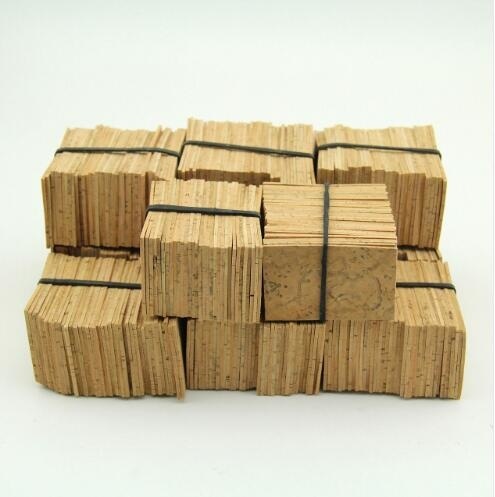Cork Care
- Posted on
- By Cal Barry

Most woodwind players regularly deal with cork, here's some information about where it comes from and a couple of tips on how to care for it.
What is cork?
Cork is the bark of an evergreen tea commonly called 'cork oak' (Quercus suber) that grows throughout the Mediterranean. As it is the bark of the tree that forms our cork products the actual trees are not usually felled in the harvesting process rather the bark is stripped off and processed and the tree left to regrow the bark. Generally the first harvest will be on tress at least 25 years old with subsequent harvests every 8-11 years.
Saxophone necks and clarinet, oboe and bassoon tenons all use cork to create or assist the seal of the mouthpiece or joints. This is a fantastic revolution and allows for a far greater seal and stability within the instrument.
Fitting
Getting the cork fitting correctly is important. The correct thickness of cork should allow for a good seal without the need for excessive force in assembly. In the case of tenons the actual tenons should be a good fit even before the cork is added.
When putting a mouthpiece on always have the neck off the body of the instrument and hold firmly just past the cork. This is particularity important for tenor sax and bass clarinet where the angle of the neck makes them susceptible to bending if too much or incorrect force is applied. The same idea can be applied when putting together an instrument, try to avoid gripping the keywork instead hold the wood body sections.
Incorrectly fitting or un-greased cork can also lead to your instrument or mouthpiece becoming stuck together.
Cork Grease
Cork needs regular greasing. One of the most common task we do in our work shop is replacing neck and tenon corks. While cork will compress over time and eventually require replacing due to wear in most instances a lack of grease is a major contributor to the cork tearing and requiring replacement. With regular greasing prior to assembly this can save you the $35 cork replace cost and the hassle of having to take your instrument to a technician.
Equally, too much cork grease can also be a problem. When too much grease is used it will often squeeze out around the tenon joints and get into keywork. Excess cork grease can also get underneath the tenon cork and cause the glue bond to break down and ultimately fail.
So how much is too much?
A good guide is for a new cork apply grease every time you assemble the instrument for a week or two so that the cork grease gets impregnated into the cork. A very thin layer over the cork is enough. After this period once every couple of weeks is usually sufficient. If the cork is dry or rough to touch or the instrument is no longer going together smoothly it is likely time to put on some more grease.
Always wipe off any excess grease.
Which grease?
There are a lot of different cork greases available. We recommend a synthetic grease. D'addario make an 'all natural' grease or La Tromba's Syntheic cork and slide grease is very good. If you also use lip balm Bam have recently released 'Macaron' all-in-one scented cork grease and lip balm that does both!
Replacement
Cork will compress over time and eventually will become too loose and require replacing. To increase the life of the cork try to avoid leaving your mouthpiece or instrument assembled for long periods of time. By taking the mouthpiece off or instrument apart it will allow the cork to expand again.
Multiple mouthpieces
Different mouthpieces can have different shank diameters so if you use multiple mouthpieces it can be tricky to have a good fit for both, often one will be very tight and one very loose. If using both mouthpieces equally it is usually best to fit the smaller diameter mouthpiece then wrap some teflon plumbers tape over the cork when using the larger mouthpiece. This ensures a good airtight seal for both but won't damage the neck or barrel with excessive force.
Rejuvenating cork
Sometimes if cork has compressed a quick tip that can give you a little bit of extra time before replacement or get you by for an emergency is to cover the cork with Vaseline and gently heat it. The cork will absorb the Vaseline and expand a little. Make sure not to burn the cork though!
Synthetic cork
There are now a number of synthetic cork products available and while these can be used we generally find that natural cork is a more reliable option for neck and tenon corks.
